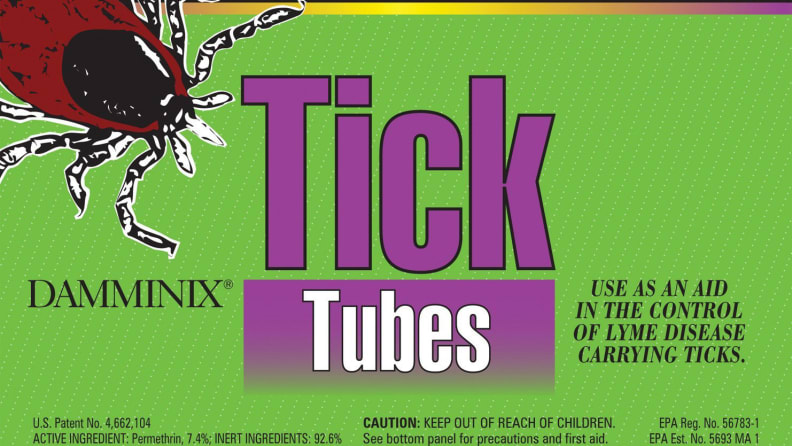This will be a bad year for Lyme disease—here's how to protect your family
The best way to protect your family from Lyme disease is to prevent it
Products are chosen independently by our editors. Purchases made through our links may earn us a commission.
Lyme disease is no joke. The bacterial infection is transmitted through tick bites, and can cause years of fatigue, rashes, flu-like symptoms, and joint and muscle pains.
According to researchers from the Cary Institute of Ecosystem Studies, 2018 is set to be one of the worst years for Lyme disease. The CDC says disease cases from mosquito, tick, and flea bites cases have tripled between 2004 and 2016. As troubling as these statistics are, there are many easy ways for you to protect your family.
1. Clean your... mice?

Tick tubes clean mice and other rodents of ticks.
While most people get Lyme disease from tick bites, the little critters themselves get infected from feeding on mice. A mouse can carry up to 100 ticks, and if Lyme disease is present, 95 percent of those ticks will get infected.
Mice tend to reside in fragmented landscapes—meaning patches of trees broken up by fields and lawns—largely because predators like foxes and owls prefer heavily wooded areas.
If this sounds like your backyard, you might want to get tick tubes. Mice crawl through these tubes and get coated with permethrin–a chemical that will kill ticks, but not mice. Because who really wants to deal with a bunch of dead rodents on their property?
2. Try a fence to keep deer away
Ticks may get Lyme disease from mice, but they tend to breed on the coats of deer. Hence, keeping deer away from your property is a way to lessen your family's contact with ticks. If you have a garden, get some deer fencing and cordon that area off.
This is increasingly important because many towns in America are overrun with deer.
3. Use repellents
When it comes to repelling ticks, nothing beats a spray that contains DEET. Or, for those of you that want to take a more proactive approach, you'll need a spray that contains permethrin–the same stuff in tick tubes. You can spray the chemical on your clothes to kill ticks that try to hitch a ride on you. Just be careful if you have pets, as it's extremely toxic to cats.
4. Buy the right kind of tweezers

If you find a tick on a loved one, it's best to remove it with a pair of tweezers. However, according to the University of Rhode Island's Tick Encounter Resource Center, not all tweezers are created equal.
It's better to get tweezers with pointy tips—like these popular ones from Amazon—rather than those with square ones. Squared-off tweezers apply more pressure, which could squeeze the bacteria that's inside the tick into your blood. Gross.
5. Be vigilant
Above all, you should always be vigilant. Teach your children how to perform a proper tick check whenever they come in from playing near wooded areas with tall grass. If you live in a county that the CDC has confirmed to have Lyme disease, treat your clothes with repellents when you know you're going to be spending the day outside.
